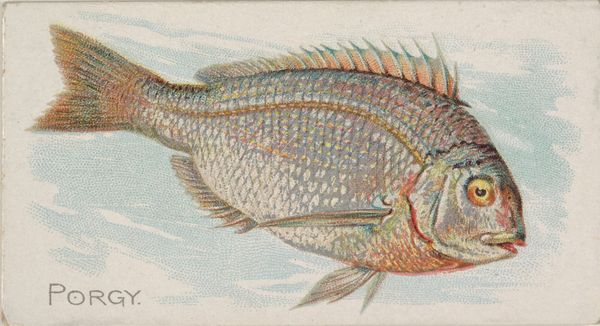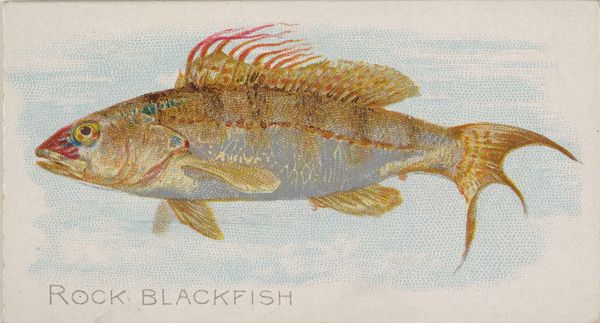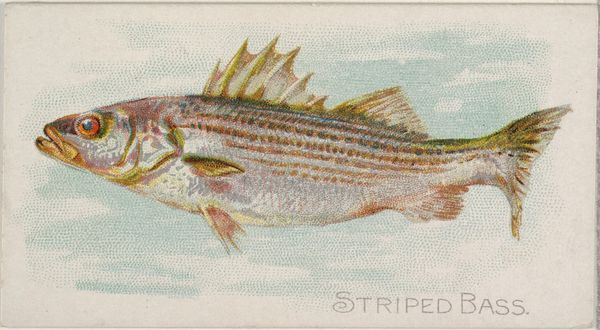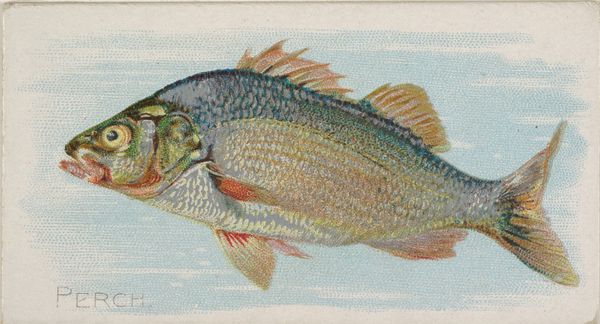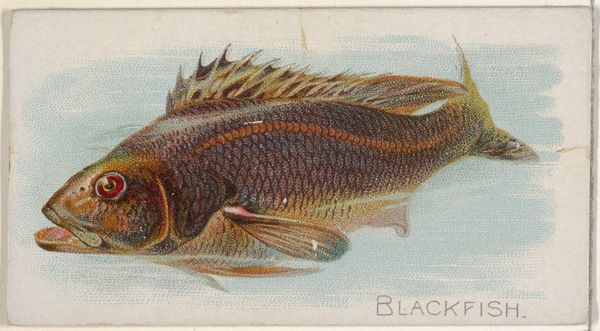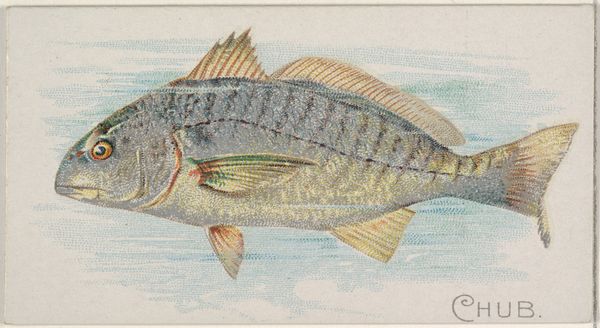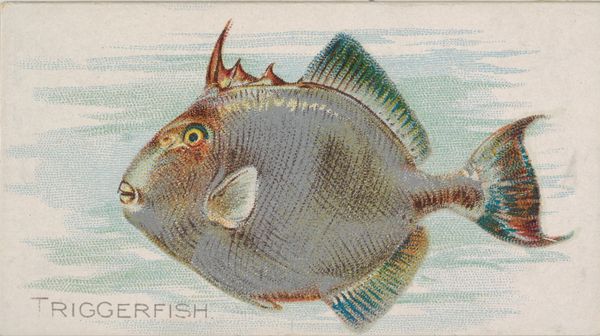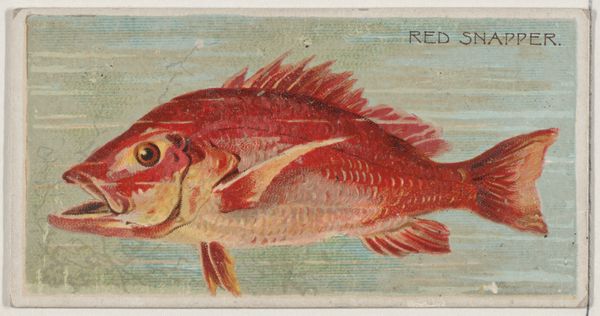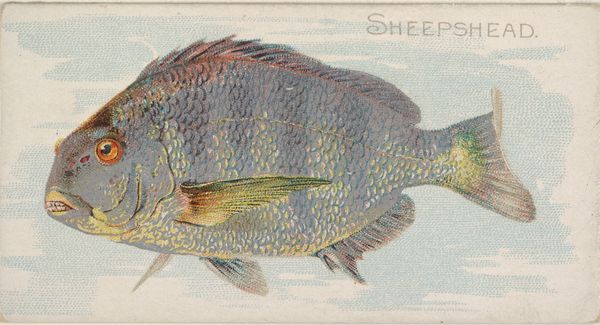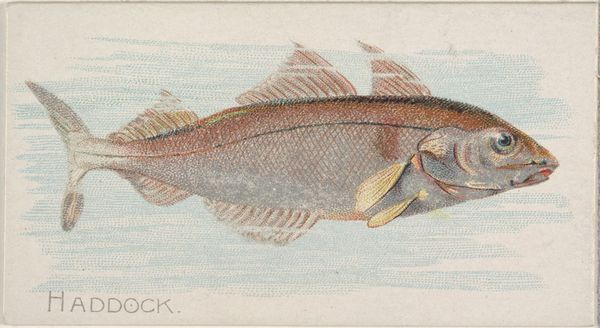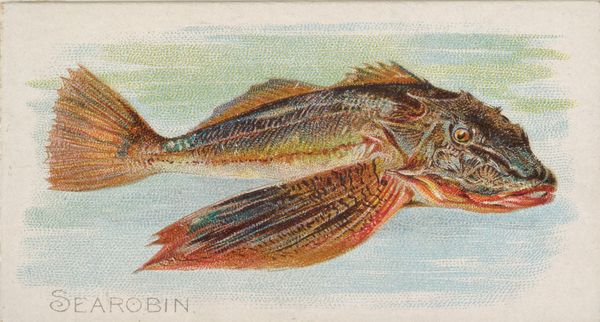
Red Snapper, from the Fish from American Waters series (N8) for Allen & Ginter Cigarettes Brands 1889
0:00
0:00
Dimensions: Sheet: 1 1/2 x 2 3/4 in. (3.8 x 7 cm)
Copyright: Public Domain
Editor: So, this piece is called "Red Snapper," from the Fish from American Waters series. It was created in 1889 by Allen & Ginter as a color drawing, probably used for prints on cigarette cards, and it's currently housed at the Met. I'm struck by the vibrant color and its miniature size. What do you see in this piece? Curator: What immediately strikes me is how this unassuming little print offers a lens into the intersection of commerce, scientific representation, and the rise of consumer culture. Cigarette cards like this one weren't just advertising; they also served a role in disseminating knowledge about the natural world to a wider public. Do you think the rendering is more "accurate" or "idealized"? Editor: Hmm, good question! It looks quite accurate in terms of the fish’s features, but the heightened colors maybe idealize it. How does the cultural context tie into its style? It has an illustrative almost diagrammatic aesthetic. Curator: Exactly! It is representational. We should consider Ukiyo-e Japanese prints because their influence was immense during this period. You have a flattened perspective, bold outlines and vivid colors – elements embraced in the West. Also, prints were relatively affordable compared to paintings. They democratized art access which in turn made them popular as collectables with series and sub-series for a consumer market, and even trading amongst collectors. Editor: I hadn't considered the connection to Ukiyo-e and mass consumption. That gives it a completely different spin than just a picture of a fish! Curator: It’s all connected. This simple card shows art being actively and popularly distributed via novel commercial means, a development relevant to museums' roles today. Editor: Thanks, that helps see the work in a different way, understanding its influence and accessibility during the period! Curator: Likewise, reflecting on these details makes it fascinating how prints allow a dialogue about accessibility and education which are crucial matters now.
Comments
No comments
Be the first to comment and join the conversation on the ultimate creative platform.
